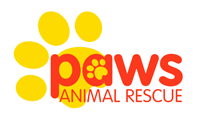Working on engagement with your dog – videos included
Does your dog come out of the door after getting their walking equipment on and spend most of the walk time at the end of the leash. Do they struggle to focus on you or even listen to commands they know at home when outside of the house?
Building in some skills to teach your dog how to engage with you on walks not only improves their value of the walk but it also enable you to enrich your dog’s life with more freedom and enhance their wellbeing. It allows you to predict your dog’s behavior and enable you to manage your dog safely and comfortably. It’s also the foundations for loose leash walking and reactionary training if this is something you’re working towards too. Below are some ways to improve your dog’s ability for focus and engagement on your walking routine today.
1. Balance games
Firstly, make sure whatever surfaces are available to you are safe and stable. Engagement is all about improving your dog’s ability to listen and respond to you. We don’t want them to have a negative experience of feeling unsafe carrying out a command cue you gave them. Start with curbs in the estate, little steps, little sturdy walls etc. Lure them with a treat to their nose to put their front two paws on the safe surface, immediately give them a yes Marker and reward them. Assign a cue to the behavior on stepping up on a safe surface, like “up, up”.
After repeating it a few times, drop the lure and ask your dog to put two paws on a safe surface by just saying the cue prompt. Always reward them with a “yes” Marker and treat. Gradually start incorporating longer time increments on the safe surface. Before giving them a release cue etc. Watch Ripley’s demonstration below.
What’s the purpose of this you mind ask? It develops body awareness skills, confidence, communication skills and your dog’s ability to follow through on commands and further develops cognitive skills by allowing them to directly interact with their environment without just springing to the end of the leash and not even looking back at you. Instead they’re learning to follow directional cues from you.
2. Environmental enrichment
Your dog experiences the whole world through scent. Its their most primary sense. Its also incredibly stress relieving and reduces blood pressure. If your dog struggles from stimulus overload on walks. Forget walking from A to B and back again. Instead, spend more time stopping at treelines, sand dunes, leaf piles, mulch hills etc and let your dog get their nose down to do some “nose yoga” and take in all of the scents and let them spend more time doing “dog stuff”. Digging, chewing, sprinting, sniffing and foraging are all activities your dog should engage in every day. It’s also a massive energy sapping activity without driving their adrenaline and cortisol levels up. They’ll be more tired and not “crashing” after too much stimulus but proper satisfactory, relaxed sleeps post walks. It’s also low impact exercise that they can do on leash but just let them explore with a long, loose leash. Avoid pulling them back or equally letting them pull you around too. Watch Rudi, Boo and Rafa.
3. Scent games
Following on from the Environmental enrichment. Play scent games along the walk to help slow them down and engage with you more. Primarily, engagement should not be about demanding attention from your dog for the entirety of the walk. Instead, reinforce the moments they do check in with you with lots of rewards and praise and this can be done by rewarding them with more opportunities to explore the environment. Hiding treats by either doing treat scatters in the grass and asking your dog to “find it” by going scavenging and foraging for the treats in the grass, or tossing one treat away for your dog to find and then the moment they turn back to you, reward them by tossing another treat for them to find. Alternatively, as Ripley demonstrates below, you can use the walk route and everything that’s readily available to you to do scent games. Here I’m hiding food in the cracks of an old wall and helping her find the food by pointing them out and getting her to sniff them out. This not only slows your dog down and engages their brain on a walk but it’s teaching them to focus on us for cues and rehearse the all important engagement skills with us.




